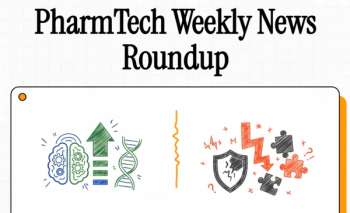
- Pharmaceutical Technology-12-02-2012
- Volume 36
- Issue 12
Harnessing the Power of Fingerprinting Technologies
A few years ago, drug criminals would put all their efforts into matching packaging and labeling, or manufacturing good-looking fake materials. Today, criminals are capable of much more.
A few years ago, drug criminals would put all their efforts into matching packaging and labeling, or manufacturing good-looking fake materials. Today, criminals are capable of much more, and in some cases, produce material that appears even more professional than the genuine products. At the recent 8th World Meeting on Pharmaceuticals, Biopharmaceuticals and Pharmaceutical Technology, which took place on March 19–22, 2012 in Istanbul, Novartis presented such a case involving a fraudulent package that was identified with more “apparent” security features than the original. In this particular example, a hologram that was not on Novartis’ original package, was found on the fake product. This package demonstrates that now, more than ever, a visual examination relying on features such as holograms will not protect the end user. It is also clear that criminal rings include packaging and product specialists as well as scientists. These well-organized groups will continue to find cracks in any track-and-trace delivery system. Eventually, rapid and nondestructive authenticity product testing will be required.
Ian T. Campbell is global pharma segment and product manager at PANalytical.
Technologies for counterfeit detection
During the past decade, several technologies ranging from classical analytical techniques such as chromatography, to manufacturing security features such as hidden-excipient-private-label printing, have been pitched as being the ideal solution for counterfeit drug detection. Naturally, those that were already popular with pharmaceutical analysts were considered first. However, new ones are being considered all the time, including the development of spectrometry methods that were presented at a recent Joint Pharmaceutical Analysis Group (JPAG) meeting, hosted by GlaxoSmithKline in Stevenage in June 2011. All techniques must be measured against two types of desired functionality: a rapid screening test for detection, and a final confirmation method. These tests and methods should be nondestructive and easy to use.
Dr Detlef Beckers is Product Manager Scientific XRPD at PANalytical.
Vibrational spectroscopic technologies, such as near infrared (NIR) and Raman have become popular in recent years, partly because of their portability. In addition, energy dispersive X-ray fluorescence (EDXRF) and X-ray powder diffraction (XRPD) are of growing interest because both can rapidly identify and confirm counterfeit materials. EDXRF and XRPD can perform whole tablet analysis on a similar time scale to NIR and Raman (usually a few minutes). Modern search-match and statistical algorithms can also perform automatic identification and are extremely user friendly. The algorithms are programmed to hunt for similarities and dissimilarities between the sample in question compared with the database.
XRPD
XRPD can be used to identify crystalline substances, including all related polymorphs. This group includes solid APIs and excipients. Modern transmission optics have made direct analysis through blister packaging possible as well. Using a database for comparison, the software can automatically and easily identify fraudulent drugs. The advantage of this technique is that the drug can be confirmed without being removed from the blister. It can then be simply repackaged or sold as seen fit.
Furthermore, with XRPD, multiple drug forms and concentrations can be determined. This feature can be beneficial in identifying materials that are expired original-real products. In such cases, it is likely that degraded substances would be present, which can easily be detected by XRPD fingerprinting.
EDXRF
Traditionally, EDXRF spectrometry has been used for qualification and quantification of elements across the periodic table. Solid-dosage products have a well-defined shape and are primarily made of excipient materials, most of which are natural materials with characteristic elemental signatures. Therefore, a simple scan method that takes only a few minutes can be used to produce spectra, which then can be compared with a library of scans of authentic materials. This entire process can be automated, and using multivariate or spectral regression algorithms, used to repeatedly identify counterfeit materials.
Moreover, EDXRF scans can be used for elemental quantification to identify health risk factors such as toxic heavy metals (e.g., arsenic (As), lead (Pb), cadmium (Cd) or mercury (Hg)). Such information is not only useful for authorities to determine additional health-risk factors, but can also be invaluable in criminal-source material tracking and distribution investigations.
Comparing XRPD and EDXRF with handhelds
Although handhelds have the advantage of portability, which is particularly evident in field operations where agents require a lightweight tool for a quick screen, this often comes at a cost, for example, reduced automation, limited software fingerprinting algorithms, and difficult database management. Currently, only handheld vibrational (IR and Raman) and XRF instruments are established. Portable XRD instruments exist but generally have poor resolution and are prone to environmental conditions and variability than dedicated laboratory or benchtop systems. All portable XRD instruments have traditional reflection geometrical optical designs, which means that whole tablets cannot be measured (i.e., the tablets must be destructively powdered). The result can lead to a great loss of additional intelligence and the use of an article for legal proceedings.
Generally, it is good practice to compare scans/diffraction patterns acquired under similar conditions. Most pharmaceutical laboratories own XRPD systems and some are purchasing XRF for applications to meet the new US Pharmacopeia General Chapter <232> Elemental Impurities–Limits. These technologies can also be used going forward in counterfeit analysis.
Articles in this issue
almost 13 years ago
Pharmaceutical Technology, December 2012 Issue (PDF)almost 13 years ago
Tracking the Supply Chainalmost 13 years ago
Harmonizing Global Efforts Against Counterfeitsalmost 13 years ago
Mice on a Missionalmost 13 years ago
When Disaster Strikes at Homealmost 13 years ago
Acquisitions Reshape the Bio/Pharm Services Industryalmost 13 years ago
Health Policy Challenges for Obama Administrationalmost 13 years ago
Job Securityalmost 13 years ago
Innovation in a Leading Disease Target: Alzheimer'sNewsletter
Get the essential updates shaping the future of pharma manufacturing and compliance—subscribe today to Pharmaceutical Technology and never miss a breakthrough.





